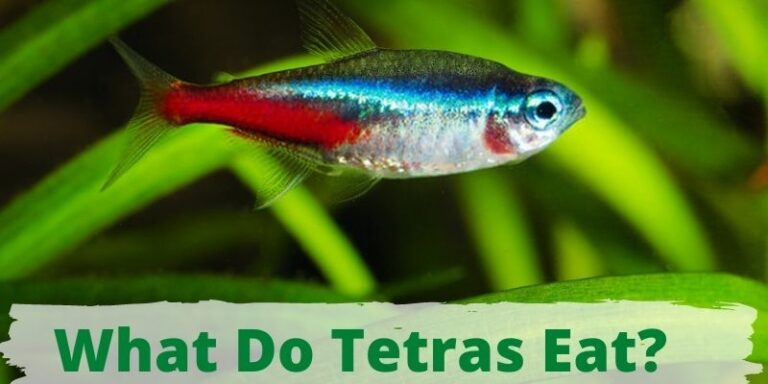Can Fish Eat Grapes? (Safe or Not?)
Fish are not usually found to enjoy eating fruits and typically feed on other natural food sources. But many individuals have asked the question regarding the topic, can fish eat grapes?
Yes, fish can eat grapes without any hesitation, and grapes are entirely safe for fish if served in a proper way to the fish. The nutrients present in the fish will add value to the growth of fish.
Are Grapes Safe For Fish?
Yes! Grapes are safe for fish and can be added to their diet. The sugar in grapes is broken down and metabolized by the fish differently from humans, so they can digest it without getting a bunch of gas or bloating.

They also get a lot more food value due to the presence of fiber. Grapes also have plenty of other benefits that will keep fish healthy too.
They have a high concentration of pectin, which helps keep the water in their stomachs from becoming too acidic.
They must get it because they can develop ulcers or even cancer if they don’t! Grapes also provide them with other vitamins such as Vitamin C and Vitamin A.
These are great for fish because these vitamins are essential for their eyesight as well as helping them grow strong bones and scales. Grapes make your fish healthier.
However, keep in mind that grapes contain ursoliolin, which can induce histamine responses in some fish species when consumed excessively. So, the general rule of thumb is that you should not feed your fish grapes more than once a week.
Do Fish Like To Eat Grapes?
Yes, fish like to eat grapes. They’re a great source of nutrition and good for their health. Fish typically thrive in cold waters, so they can’t survive off the nutrients in the water alone.
By eating food such as grapes, they get an extra boost of vitamins and minerals to provide them with energy and help their muscles grow so they can stay strong in the water all day long.
How To Feed Grapes To Fish?
There are various methods you can use to feed grapes to fish. The best method is to either suspend them with a string of unsold beads thread or weave the grapes onto a fishing line and release them into the water.
Alternatively, you can use a slotted spoon or grape sieve to lower the grapes into the tank. Lastly, you can dip some bread into grape juice and drop this in for your fish.
Some of the most common methods to feed grapes to fishes are listed below.
Holding a piece of grapes in your hand, scoop up a handful of grapes with the other. Then, feed each grape individually.
If you manage to do it well, you can create art by creating patterns and holding them in different shapes (Try this method with some marine clowns).
Oral-feeding: The easiest way to make fish eat grapes is by smashing them into small pieces first. Use your finger or a heavy sieve. Again, try to smash them slowly to be better accepted and nutritious. Can Fish Eat Rice?
Soak the grapes in juice first. If you do this right, it will work as an amazing to feed them.
You can soak the grapes before serving the fish. In this way, they will last longer and may also be consumed faster.
Another benefit of soaking the grapes is that it helps in avoiding the risk of swallowing any seeds or sponges that might become stuck inside their throat or intestines.
This method is more suitable for Discus & Goldfish. In a bowl, boil some water and put some grapes in it.
It is best to soak the grapes for about 5 seconds or until the skins have softened. Afterward, take them out and serve them on a plate for your fish to eat.
This method is quite common among hobbyists who breed fishes (such as Bettas). By simply removing the bottom of an egg cup and draining its contents, you can pour some grape juice into this container.
Drop the cup inside their aquarium, and they will get to eat them when they feel hungry.
How Often To Feed Grapes To Fish?
In general, the frequency of feeding your fish depends on the type of show fish and its size.
For instance, Idol Goldfish should be fed not more than 1 time daily. On the other hand, Koi feed on large meals not more than 2 times a day. Keep in mind that grapes should be given to the fish as a treat only and not as a portion of regular food.
How Much To Feed Grapes To Fish?
If your fish is still young or small, you should feed only one grape. You can give two grapes to a fish when it’s about 4 inches long.
However, if your fish grows much bigger than this, then you should feed it 2 to 4 grapes at a time. If your fish is a little bigger than this and has been eating for a month or so, then it might be time to feed them 5 to 7 grapes.
But if the fish is much larger than 10 cm or 4 inches, you should probably give them more than mentioned above.
Do Fish Eat Sea Grapes?
Yes, fish eat sea grapes. Some species will eat them as part of their diet, while others will leave them alone.
For example, grouper eats sea grapes, but hermit crabs do not. Like many other plants, seagrapes are often eaten by marine animals like otters or shellfish, but they depend greatly on the water salinity and tides for survival.
Fishes eat them because they are attracted to the sea grapes by their color and scent and eventually choose to eat them. A grouper, for example, eats these plants because it is attracted to their bright red color and sweet scent.
Usually, the first thing a grouper does when it comes across something red in the ocean (like a piece of coral) uses its bony tongue to poke at it.
What Type Of Fish Eats Grapes?
Fishes have to eat various foods, and grapes are just one example of fish consumption. Fishes that eat grapes are listed below:
- Leopard Sharks
- Blue Tangs
- Fusilier Fish
- Guppies (pangasius)
- Painted Cats (Cat Fish)
- Ladyfish
- Sailfin Catfish
- Rabbit Fish
- Suckermouth Catfish
- Rainbowfish
- Mollies
- Barbs, danios, and tetras of the genera Danio, Alburnus, Rasbora, and Hemigrammus consume young grapes in aquaria.
- Clownfish of many species have been observed feeding on the fruit in addition to most other foods.
Can Betta Fish Eat Grapes?
Yes, betta fish can eat grapes. Many fruits and vegetables are safe for these feisty creatures to consume.
However, mixing too many different types of food at once can cause digestive problems for your fish.
It is also not a great idea to feed your fish exclusively fruit or vegetables because they still need other types of food to get all the nutrients that they need.
It’s best only to offer one type of fruit or vegetable per mealtime, and be sure there is also some protein-rich food in their bowl, so they get everything they need to stay healthy.
Here are some other things you should also keep in mind when feeding your betta:
Your fish won’t be able to eat all the food at once. Always offer them several meals a day to not feel overwhelmed by eating too much at once.
Betta fish tend to eat a lot more when they’re in a group, so make sure you have at least one male and one female if you plan on purchasing more than one betta.
Bettas should have a place to hide when they eat but still get the available food. A hideout like this will encourage your fish to constantly hunt for food. Betta fish are similar to cats and dogs like they are hunters.
Can Guppies Eat Grapes?
Yes, guppies can eat grapes. Guppies will eat the skin first and then go for the fruit to prevent themselves from falling upon them.
Most people would recommend letting your guppy share the grape with you at least once a day.
That’s because five to 10 grams per day of grapes are sufficient for a single medium-sized fish’s daily nutritional needs and beneficial physiological effects such as increased growth, better coloration, enhanced health care, and improved immunity.
Can Koi Fish Eat Grapes?
Yes, koi fish eat grapes. They are omnivores, meaning they can eat both plants and animals. Grapes are fruit, making them acceptable for koi fish to consume.
Koi fish like to be catered to with certain fruits like grapes, peaches, strawberries, and oranges.
Summary
Grapes are nutritious fruits, and fish can eat grapes whenever served them. It would be best if you would keep in mind the important thing is not to overfeed them with grapes and serve grapes to the fish as a treat and not as regular food.







